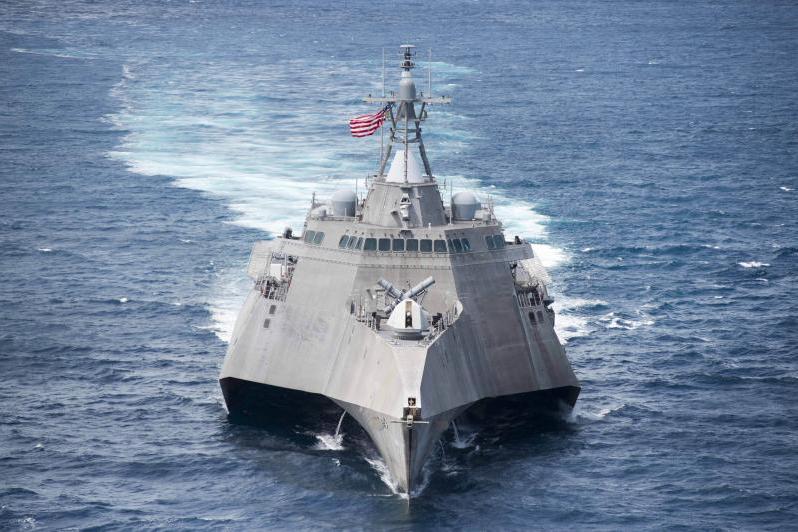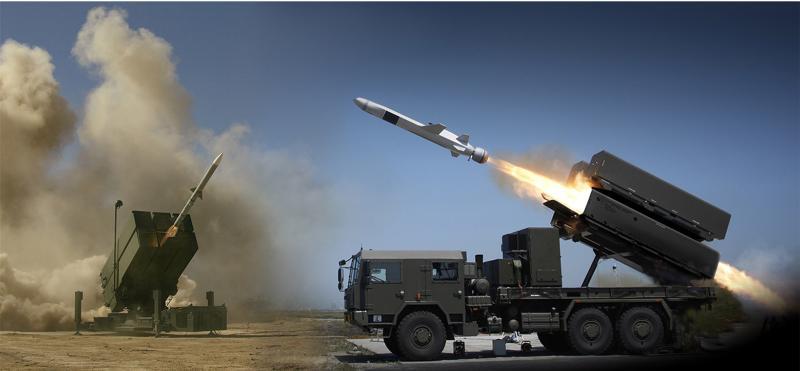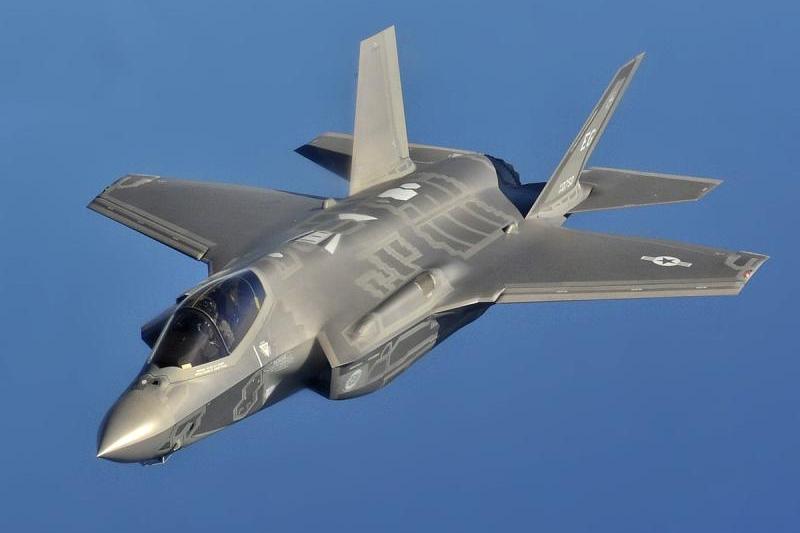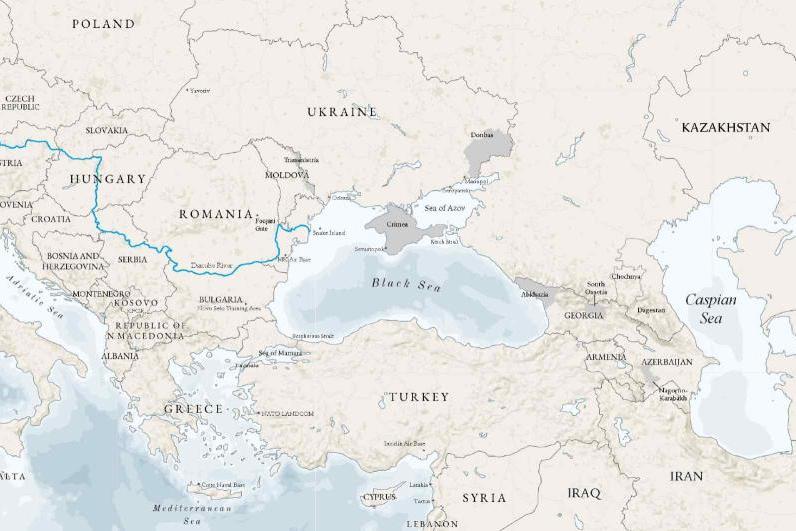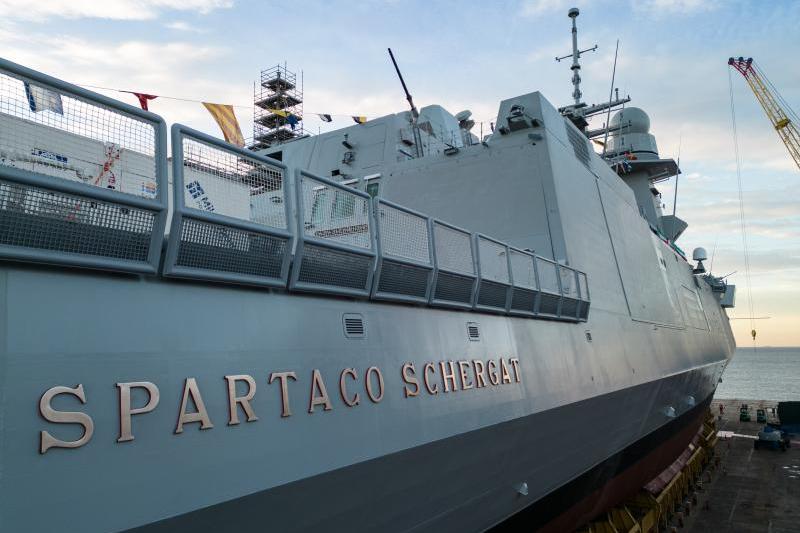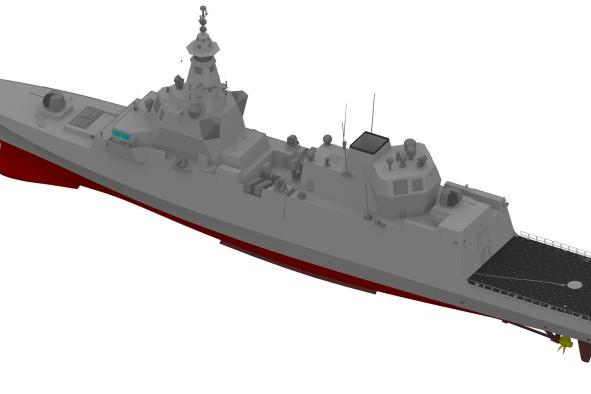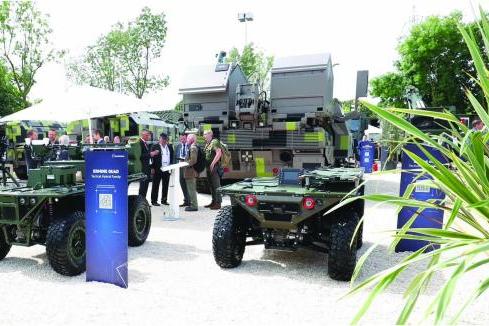License to drive the MQ-25 Stingray
Moving this first-of-its-kind aircraft aboard an active carrier is a joy (stick)
It’s an all-hands-on-deck situation, but no hands touch the star of the show. With its smooth lines, stout frame, and flat and forklike nose, the unconventional vehicle looks like nothing else on the deck of the aircraft carrier USS George H.W. Bush. Most noticeable is what is not on an MQ-25: the customary bump where a pilot might sit.
The carrier is alive with activity as teams of flight deck directors, known as yellow shirts, and the new MQ-25 deck handling operators move the Navy’s newest aircraft — which indeed has no cockpit — without touching it.
“The reaction from sailors on the ship has been amazing,” said Boeing test conductor Matt Savage. “They look at it and want to know more about what it does. They wonder where the engine is because of our unique design. They ask if it’s the same refueling pod as the F/A-18 Super Hornet. [It is.] It gets a lot of looks.”
It’s a look into the future of the U.S. Navy’s carrier air wing.
The MQ-25 is a fighter jet-sized aircraft designed to be a gas station in the sky. Instead of using an F/A-18 fighter jet to refuel other aircraft — a process used today called “buddy tanking” — the MQ-25 will take over the refueling role.
The Boeing-owned MQ-25 test aircraft on the deck of the Bush had previously proved its aerial refueling credentials, transferring fuel to three different Navy aircraft — an F/A-18F Super Hornet, an E-2D Advanced Hawkeye and an F-35C Lightning II — in a span of three months in 2021. Known as T1, it became the first unmanned aircraft in history to refuel another aircraft.
A big test remained, however. Yes, T1 could connect to other aircraft at 10,000 feet (3,048 meters) and autonomously transfer fuel. But could it move quickly and easily in what has been described as a “ballet of chaos” — an aircraft carrier deck — with a remote control system?
Boeing engineers and specialists reveal how this MQ-25 predecessor aced this critical test.

The streamlined, modular, handheld control design debuted on the Bush was the result of multiple iterations with Boeing, the Navy and the deck control device supplier, SECO USA.
Ryan Hanneken, MQ-25 test engineer and deck handling operator: “To drive the MQ-25, we have a unit that’s mounted on a belt, and it also has a display that mounts to your right arm as well as a control unit that we hold in our right hand. It has a joystick that controls the nosewheel steering, wing folding, tailhook and launch bar.”
Rich Bubenheim, MQ-25 support equipment engineer: “Refining that design was a challenge. As an engineering team, we were held accountable every step of the way. We worked with subject matter experts from Boeing and the Navy to define the system requirements and specifications that were essential for a carrier-based system. The sailors who will use this device are working in one of the most stressful environments in the world, so we knew we had to build an intuitive system that’s easy to use and carry. It also has to be compatible for the carrier environment. For example, we took steps early on to strengthen the electromagnetic interference shielding design.”
Learning to “drive” T1 was an amped-up version of learning to drive a car — requiring a lot of practice, multiple tests and a diverse team.
Chantel Iwen, MQ-25 courseware development and training lead: “Sometimes training is taken for granted, but we have such an amazing team that worked hard to make this event safe and successful. Some of the drivers had never been on a carrier, and only a few of the flight deck directors had experience with this unmanned aircraft. Our team helped develop and provide the training on everything from the deck handling device itself to handoff procedures to flight deck operations — resulting in the official ‘driver’s license’ to operate T1 on the carrier.”
Part of the testing involved simulation work in St. Louis, with deck handling operators using the real hardware to move a simulated MQ-25 around on a simulated carrier deck. The team then graduated to moving T1 around MidAmerica St. Louis Airport in Mascoutah, Illinois, using lines painted on the concrete as the carrier boundaries. This was repeated at Naval Station Norfolk, Virginia, right before T1 was craned aboard the Bush.
Bubenheim: “In addition to operator training, the simulator helped us refine the product and mature the deck control design. Members of the Navy Fleet Integration Team got their hands on the system early and provided valuable feedback throughout the development process.”
Savage: “Everybody who’s in engineering wants to figure out how the world works, how it all fits together. On the test side of the house, we get to play with these airplanes and try to push them to their limits. We want to know where those limits are so we can design a safe product. We put the vehicle through its paces so when we deliver the production variant to the Navy, they know MQ-25 can be trusted to do what it’s supposed to do.”
Coy Wilhelmy, MQ-25 flight operations mechanic and deck handling operator: “The diversity of the integrated test team is incredible — both Boeing and Navy personnel, veterans and civilians, engineers for every technical specialty, pilots serving as air vehicle operators, mechanics like me.”

For more than a week at sea, the Boeing and Navy team tested T1’s ability to integrate into normal carrier operations. Six trained Boeing deck handling operators donned the remote control system and worked with eight Navy flight deck directors to move T1 around the deck using the Navy’s well-established system of hand signals.
Hanneken: “We drove T1 around the deck, starting small and increasing our difficulty along the way. We tested the differential breaking to see how that software will work in the carrier environment. We drove T1 into the catapult, never once overshooting the entry. The catapult safety officer gave us the turnup signal, which allowed us to signal the air vehicle operator [AVO] below deck to go to full power as if we were ready for takeoff.”
Cedric Cook, mission systems engineer: “While the AVO has control over the vehicle in flight using the ground control station [GCS], movement on the carrier deck is different; the deck control devices are the source of control. Even with this, the GCS still monitors the vehicle, and AVOs can do emergency controls if necessary — it’s part of the safety redundancy built into aircraft operations.”
Iwen: “Every single day, we learned something new, like deck obstructions and other situations we didn’t think of when developing the training. The aircraft directors on the ship had to get used to not looking at an actual pilot, instead knowing that someone right behind them is driving the aircraft.”
Savage: “We ran all kinds of test points on the carrier, both day and night scenarios. And what we saw was within our predictions of how MQ-25 would operate. The deck handling system performed like we practiced. We showed we can move this unmanned aircraft on the deck using existing Navy procedures. We have valuable feedback from the Navy on potential improvements in terms of turn radius, speed and device brightness that we’ll use in this next phase of development.”
Mike "Hank" Schmank, flight test safety lead: “The carrier deck is one of the more unique and challenging test environments that I have been involved with. The environment is remote, loud, slick, cold, windy and extremely dynamic. The combined test team invested a great deal of effort to ensure the safety of all test participants, both prior to embarking and while underway. I was extremely proud of how laser-focused on safety the team was, and we adjusted test operations from daily learnings. That effort paid off and was a huge part of the overall success of the mission.”
Hanneken: “Being out here for this demonstration is pretty historic. In the future, when this aircraft regularly flies on and off the carrier and is part of daily life, I’ll look at the person driving it on the deck and be able to say I was one of the first to do that.”
Cook: “When you look around at this team and the amazing things we’re doing, you realize you’re bringing up the next generation of engineers and innovators. These are the people who will carry on the legacy of naval aircraft development.”

The successful carrier demonstration was another step forward in bringing the MQ-25’s capability to the fleet — and a moment of reflection for the veterans on the team.
Bubenheim: “Having spent six years active duty, it was gratifying to see the professionalism of all the sailors on the carrier, as well as how our MQ-25 team worked together to carry out the mission. When T1 was in the catapult at full engine power with wings spread, it was a moment I will never forget.”
Wilhelmy: “There’s a deeper meaning to the veterans on this team because we’ve done it — we’ve been there. We know that eventually, when MQ-25 goes out to the fleet, there will be people who go into harm’s way to put this aircraft in harm’s way. So we’re getting it ready for that, and we want to have a thoroughly vetted aircraft.”
Brad Whittington, ship suitability engineer and deck handling operator: “Representing Boeing to the U.S. Navy, the organization I was proud to be a part of for 20 years, is coming full circle. I’m ensuring that the product the Navy gets is the best, and MQ-25 is a game-changer. It’s altering how we employ aircraft in operations from ships at sea. Unmanned aircraft are very likely going to be a staple of the fleet. We’re on the ground floor of integrating unmanned aviation into the Navy, and it’s going to increase the capability of everyone in the fleet.”
Iwen: “Being on a carrier brought back a lot of memories — things I didn’t even know I missed. It’s a family, and we take care of each other. Our team has a close relationship with the Navy. We work collaboratively on everything we do. I am lucky enough to be part of this historic program and give back to the Navy all the experience and exposure they gave to me.”
TV TIME: U.S. Navy leaders talk about the importance of the MQ-25 and its testing on national television in America.


